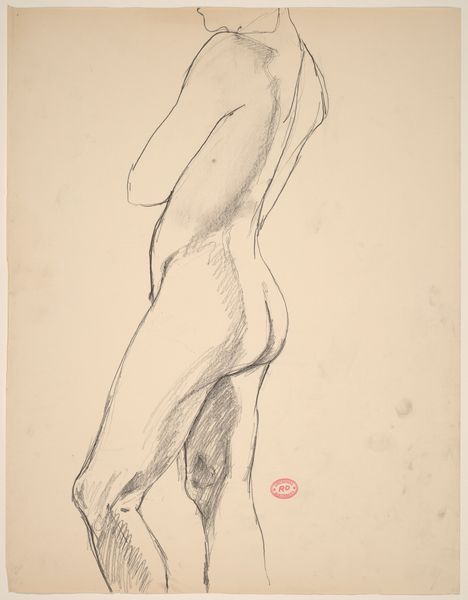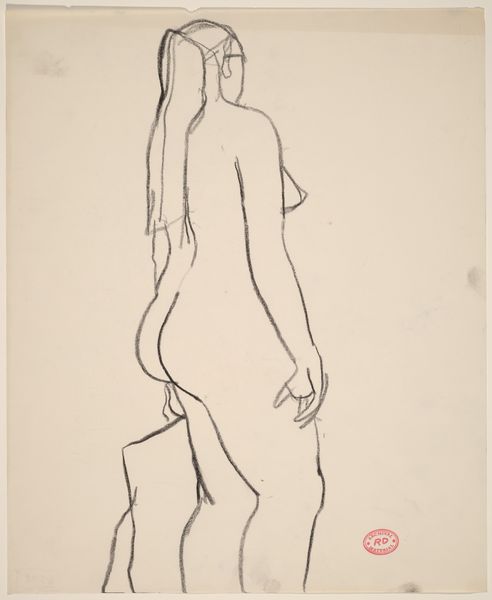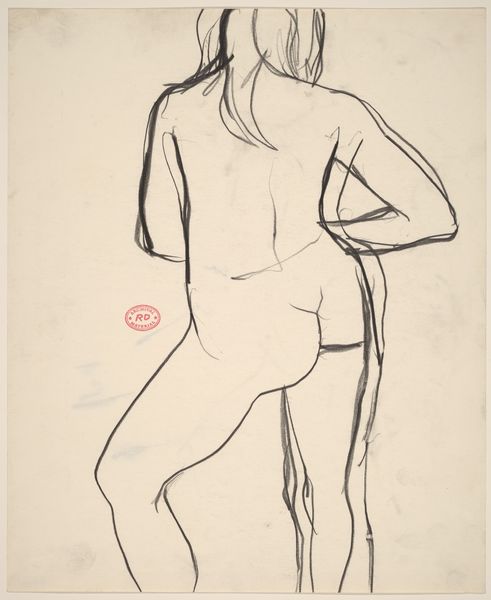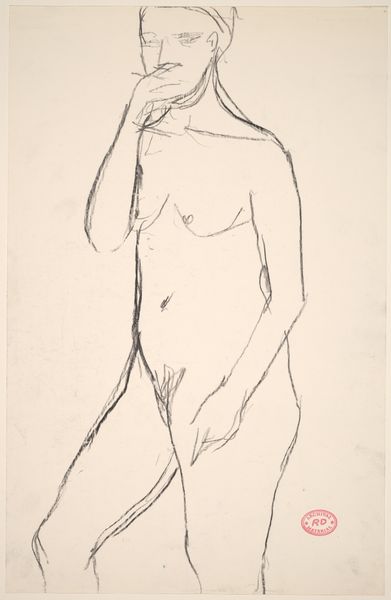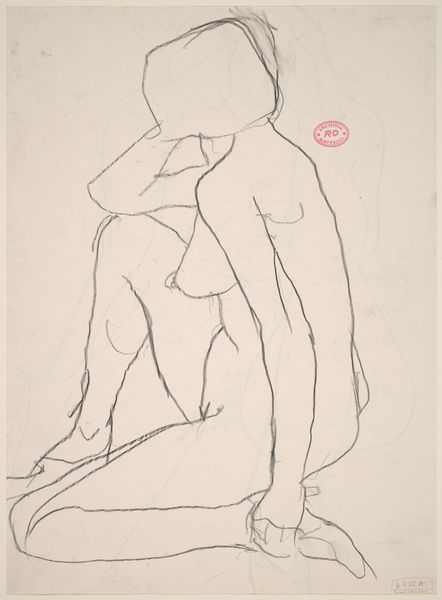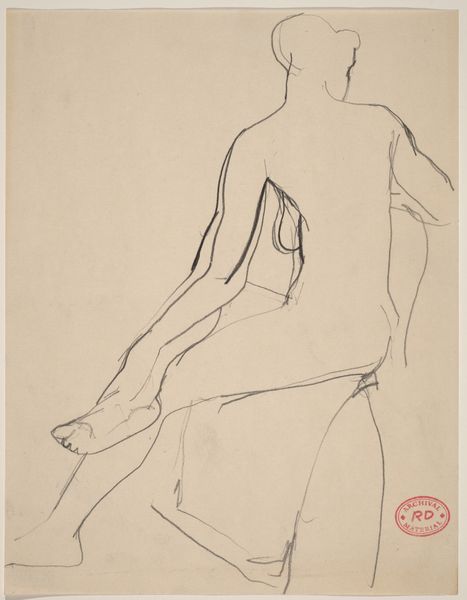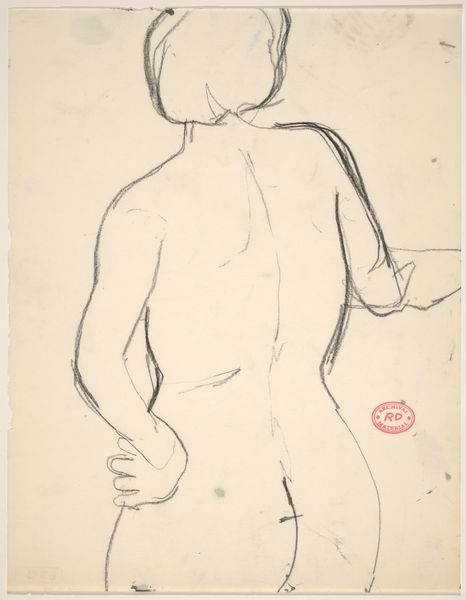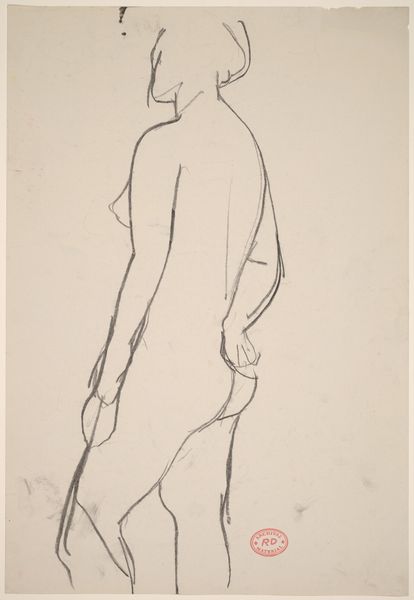![Untitled [standing female nude with hat in left hand] by Richard Diebenkorn](/_next/image?url=https%3A%2F%2Fd2w8kbdekdi1gv.cloudfront.net%2FeyJidWNrZXQiOiAiYXJ0ZXJhLWltYWdlcy1idWNrZXQiLCAia2V5IjogImFydHdvcmtzLzEyYTRkNzNhLTExZTctNGMyMS1hZmY3LTY5MWUyNzY0ZGU4Mi8xMmE0ZDczYS0xMWU3LTRjMjEtYWZmNy02OTFlMjc2NGRlODJfZnVsbC5qcGciLCAiZWRpdHMiOiB7InJlc2l6ZSI6IHsid2lkdGgiOiAxOTIwLCAiaGVpZ2h0IjogMTkyMCwgImZpdCI6ICJpbnNpZGUifX19&w=3840&q=75)
Untitled [standing female nude with hat in left hand] 1955 - 1967
0:00
0:00
drawing, pencil
#
drawing
#
ink drawing
#
figuration
#
bay-area-figurative-movement
#
pencil
#
nude
Dimensions: overall: 43.2 x 35.6 cm (17 x 14 in.)
Copyright: National Gallery of Art: CC0 1.0
Curator: This is an untitled work by Richard Diebenkorn, created sometime between 1955 and 1967. We believe it's pencil and ink on paper. Editor: The figure has an incredibly fluid feel, like it was sketched in one breath. There's something both intimate and remote about the way she's facing away. The simplicity almost borders on crude, yet there’s an elegance there. Curator: Diebenkorn was working within a modernist framework, navigating between abstraction and figuration, always grounded in material exploration. Note how the weight of the line varies, emphasizing certain contours, almost caressing the form while still hinting at the industrial processes involved in graphite production. Editor: It feels almost academic. I'm curious how Diebenkorn positioned the figure in relation to the mid-century ideals of beauty and representation. Did he intend to challenge or reinforce existing power structures within art institutions and society? Curator: It is intriguing to observe the visible pentimenti—the faint erased lines suggesting multiple attempts, evidence of Diebenkorn’s process. This visible struggle and reworking, is something he carried on working on, the evidence is in the visible process. He really emphasizes not only what, but also how the image is made, almost highlighting artistic labour. Editor: Indeed, it encourages a more critical reading. Think of the viewer’s position relative to the gaze of the figure in these types of drawing practices: the silent viewer always controls the direction, or is directed into a position of control over a subservient female model. Curator: It is crucial not to omit the presence of the hat which may also allude to a profession, to labor, or to even suggest something theatrical regarding the sitter in a state of undress. Editor: Absolutely. So, while Diebenkorn might be experimenting with line and form, his decisions also implicate him within a larger historical dialogue regarding representation. It asks, 'What are the political implications of a figure in an art gallery wall versus outside within society?' Curator: Looking at Diebenkorn's mark making makes you see how form arises out of substance, and that always reminds me the connection with the wider economic world, not just within the arts. Editor: For me, its lasting effect really brings to mind the complex social dialogues that shape how art comes to have significance on a wider scale.
Comments
No comments
Be the first to comment and join the conversation on the ultimate creative platform.
